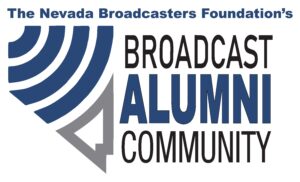Trying to stay on top of regulatory developments for broadcasters is difficult even in normal times. There are always day-to-day obligations that distract from a focus on legal and regulatory questions – and there are so many developments almost every week that we can’t always write about everything that may have occurred. So we thought that we would introduce a new feature – each weekend providing a list of some of the regulatory actions of importance to broadcasters that occurred in the prior week, with links to where you can go to find more information as to how these actions may affect your operations.
In addition, to provide information on dealing with the FCC during the pandemic, and on the many actions that the FCC has taken during the last 6 weeks – both those dealing with the current crisis and decisions made in processing its normal workload relating to broadcasting – we conducted a webinar last Tuesday on these issues. You check out that webinar presented to broadcasters across the country, available by clicking on this link. And here are some of the regulatory actions announced last week of importance to broadcasters that have been announced since then :
- The Commission held an Open Meeting on April 23 and before and during the meeting acted on three items of interest to broadcasters. The first item was a Report and Order on LPFM stations that expanded the permissible use of directional antennas, expanded the definition of minor change applications, and allowed LPFM stations to operate boosters. The Order deferred to a later proceeding a decision on changing the rules for interference between Channel 6 TV stations and noncommercial FM stations operating on the reserved band (Report and Order – and for highlights of the issues in that Order see our Broadcast Law Blog). The second item was a Notice of Proposed Rulemaking that seeks comment on the possible expansion of television station Video Description obligations (Notice of Proposed Rulemaking). Finally, the FCC adopted a Report and Order and Further Notice of Proposed Rulemaking that opened use of the 6 GHz band to unlicensed wireless devices. This move could impact certain broadcast auxiliaries. (Note: The Report and Order and Further Notice of Proposed Rulemaking has not yet been released – News Release)
- The FCC adopted a much-anticipated clarification of its Political File Order. In the Order, the Commission clarified that its Political File Order is limited to requests for the purchase of broadcast time by issue advertisers whose commercials communicate a message relating to any political matter of national importance, not to requests for the purchase of broadcast time by or on behalf of a legally qualified candidate for public office. Also clarified is the FCC’s intention to apply a standard of reasonableness and good faith decision-making to decisions made by broadcasters in: (1) determining whether, in context, a particular issue ad triggers any disclosure obligations; (2) identifying and disclosing in their online political files the candidates and political matters of national importance that are referenced in each issue ad; and (3) determining when the use of acronyms or other abbreviations in their online political files would be understandable to the general public reviewing the information about issue ads. (Order on Reconsideration) (Broadcast Law Blog)
- The FCC released a Public Notice announcing the procedures for the 2020-23 television license renewal cycle. The Notice covers familiar territory like reminding licensees of their online public file, local public notice, and EEO report filing obligations. The Commission notes that Schedule 303-S largely remains the same as it has in the past but includes changes to the Children’s TV Programming and ownership questions. (Public Notice) (Broadcast Law Blog)
- The Commission released the agenda for the May 13 Open Meeting, with two items for consideration that will interest broadcasters. The first is a media modernization item that proposes to modernize and simplify the written and on-air public notices broadcasters must provide on the filing of certain applications. (Second Report and Order) The second deals with 2020 regulatory fees. In the draft FCC action, the Commission would not adopt proposals by VHF licensees to reduce their regulatory fees to account for signal limitations and degradation. The Commission also seeks comment on its proposal to assess 2020 fees for full-power TV stations based on the population covered by the station’s contour and on the other regulatory fees it would collect later this year. Stations can find their proposed fee in Appendix G. (Report and Order and Notice of Proposed Rulemaking)
- The Media Bureau announced an update to the commercial radio station license renewal form adding a question that asks stations to certify compliance with the Commission’s ownership rules in section 73.3555. This update discards an interim procedure put in place last year after the Third Circuit Court of Appeals rejected the FCC’s ownership rule changes. (Public Notice) (Broadcast Law Blog)
- The chief of the FCC’s Public Safety and Homeland Security Bureau emailed EAS participants a reminder to secure their EAS devices, warning that these devices are vulnerable to hacking if not properly secured. The Notice refers all EAS Participants to review best practices for securing their EAS systems contained in the 2015 Communications Security, Reliability and Interoperability Council IV, Working Group 3, Emergency Alert System (EAS) Subcommittee, Final Report, and in the 2014 Communications Security, Reliability and Interoperability Council IV, Working Group 3, Emergency Alert System (EAS) Subcommittee, Initial Report.
Courtesy Broadcast Law Blog


